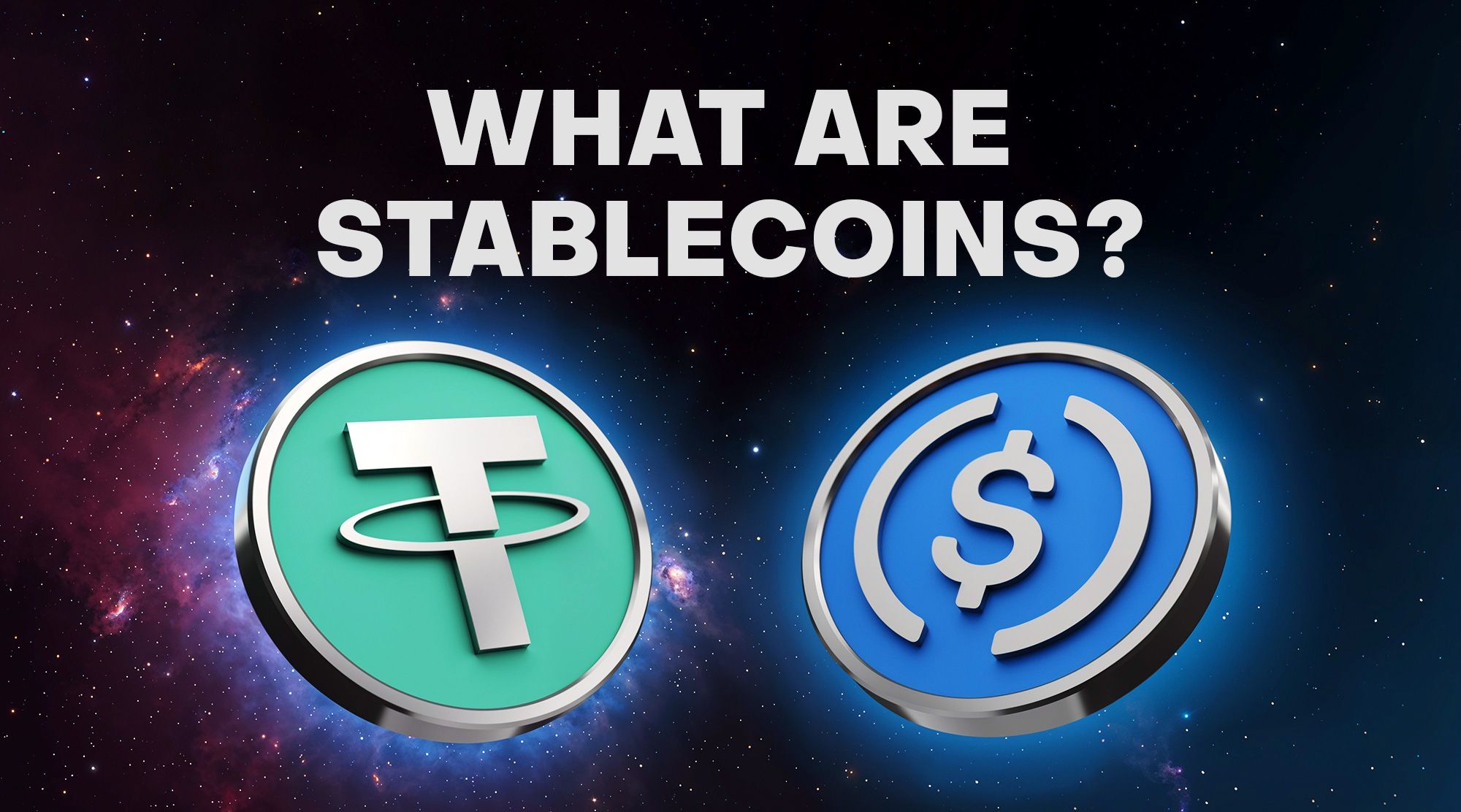What Are Stablecoins?
1
0

This article aims to delve into the intricacies of stablecoins, their significance in the crypto economy, types, regulatory landscape, mechanisms, and their potential role in shaping the future of finance.
Understanding Stablecoins: Definition and Basics
Stablecoins are a category of cryptocurrencies designed to minimize price volatility by pegging their value to external assets like fiat currencies, commodities, or other cryptocurrencies.
Unlike conventional cryptocurrencies such as Bitcoin (BTC) or Ethereum (ETH), which exhibit significant price fluctuations, stablecoins aim to maintain a stable value, often at a 1:1 ratio with the underlying asset.
Key Takeaways
- Stability: Stablecoins offer price stability, making them suitable for everyday transactions and as a store of value.
- Accessibility: They bridge the gap between traditional financial systems and the crypto world, enabling seamless transfers and payments.
- Transparency: Many stablecoins operate on blockchain technology, providing transparency and immutability to transactions.
- Global Reach: Stablecoins have the potential to facilitate cross-border transactions without the need for intermediaries, reducing costs and transaction times.
The Importance of Stablecoins in the Crypto Economy
Stablecoins are a large part of the crypto ecosystem due to two main factors: their ability to help stabilize the market and usage as safe haven assets.
Market Stability
One of the primary contributions of stablecoins to the cryptocurrency market is the reduction of volatility. By providing a reliable store of value, stablecoins offer traders and investors a refuge during times of market turbulence.
Additionally, stablecoins can act as a hedging tool against the volatility of other cryptocurrencies, allowing market participants to mitigate risk effectively.
Safe Haven Assets
During periods of uncertainty or market downturns, investors often seek safe haven assets to preserve capital. Stablecoins, with their stable value proposition, serve as a sanctuary for investors looking to safeguard their wealth without exiting the crypto space entirely.
This role becomes particularly crucial in times of economic instability or geopolitical tensions when traditional markets experience heightened volatility.
Exploring the Types of Stablecoins
Stablecoins employ various mechanisms to maintain price stability, including collateralization, algorithmic adjustments, and reserve management. Each stablecoin falls under one of three general categories.
Fiat-Collateralized Stablecoins
Fiat-collateralized stablecoins are backed by reserve assets held in fiat currencies like USD, EUR, or GBP. Each stablecoin issued is backed by an equivalent amount of the fiat currency held in reserve.
Examples include Tether (USDT), USD Coin (USDC), and TrueUSD (TUSD).
Crypto-Collateralized Stablecoins
In contrast to fiat-collateralized stablecoins, crypto-collateralized stablecoins are backed by other cryptocurrencies held as collateral.
Smart contracts govern the issuance and management of these stablecoins, ensuring collateralization ratios are maintained to support price stability.
Dai (DAI) is a prominent example of a crypto-collateralized stablecoin, backed by Ethereum (ETH).
Algorithmic Stablecoins
Algorithmic stablecoins rely on algorithmic mechanisms to maintain price stability without the need for collateral backing.
These stablecoins adjust their supply dynamically in response to market demand, leveraging algorithms to stabilize prices around a target value. Ampleforth (AMPL) is a notable example of an algorithmic stablecoin.
Regulation and Compliance
The regulatory landscape surrounding stablecoins varies significantly across jurisdictions.
Current Regulatory Landscape
While some countries have embraced stablecoins as a means of fostering financial innovation, others have adopted a cautious approach, citing concerns over consumer protection and financial stability.
Regulatory frameworks continue to evolve as regulators grapple with the challenges posed by the rapid proliferation of stablecoins.
Future Outlook
The future regulatory outlook for stablecoins remains uncertain, with ongoing debates surrounding their classification, oversight, and potential systemic risks.
Regulators are expected to collaborate on establishing comprehensive regulatory frameworks to address the unique characteristics and risks associated with stablecoins, balancing innovation with regulatory certainty.
Factors to Consider Choosing A Stablecoin
When selecting a stablecoin for investment or transactions, several factors should be considered, including:
- Transparency: Assess the transparency of the stablecoin issuer and the underlying assets backing the stablecoin.
- Stability Mechanism: Understand the mechanism employed to maintain price stability and assess its effectiveness.
- Regulatory Compliance: Consider the regulatory status and compliance of the stablecoin issuer to mitigate regulatory risks.
- Liquidity: Evaluate the liquidity of the stablecoin across various exchanges and trading pairs to ensure seamless transactions.
The Role of Stablecoins in the Future of Finance
Stablecoins have the potential to transcend the confines of the cryptocurrency market and play a transformative role in mainstream finance and global economies.
From facilitating cross-border remittances and enabling frictionless payments to serving as a stable unit of account and store of value, stablecoins offer a versatile financial infrastructure capable of reshaping traditional financial systems.
As regulators and market participants navigate the evolving landscape of digital finance, the role of stablecoins is poised to expand, ushering in a new era of financial inclusion and efficiency.
Komodo Wallet and Stablecoins
Komodo Wallet is a non-custodial wallet, crypto bridge, and peer-to-peer (P2P) decentralized exchange that supports numerous stablecoins.
Users can HODL and trade DAI, USDC, USDT, TUSD, and more.
1
0





